Chongqing News
An “Ecological Fortress” standing by the Yangtze River
2023-03-23 14:38:18
CHONGQING (CQNEWS) -- The theme of this year’s World Water Day in China, which fell on March 22, is “Making more efforts to conserve water and working together to protect our mother river”. As one of the cities located in the upper reaches of the Yangtze River, Chongqing has built 820 township sewage treatment plants, which are like fortresses, standing on the defensive line to protect the Yangtze River around the clock, guarding the clear water flowing eastward.
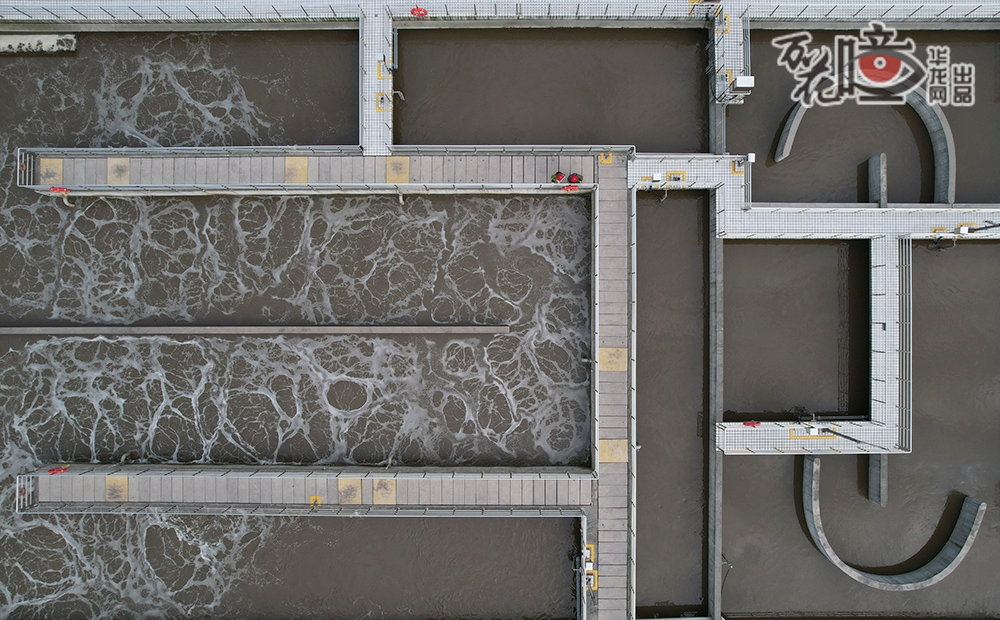
Yufu Sewage Treatment Plant of Chongqing Water Group is located by the Yangtze River, adjacent to the Guoyuan Port. About 25,000 tons of sewage flows here everyday through the urban sewage pipe network from residential areas, factories, hospitals, and other places. After undergoing a series of “metamorphoses” here, sewage eventually flows into the Yangtze River.
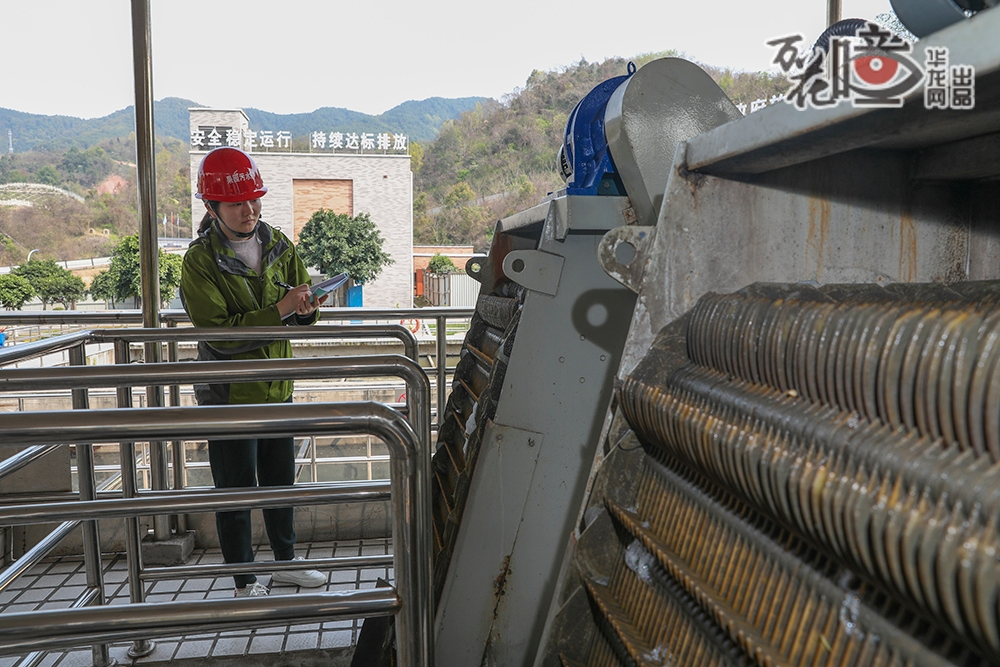
Zhou Xin, a staff member of the sewage treatment plant, is responsible for monitoring the operation of the sewage treatment process every day. Zhou Xin introduced that the "metamorphoses" of sewage includes three steps. First, the sewage will be filtered through coarse and fine gratings for the primary treatment to remove large floating objects in the water, such as branches, vegetable leaves, plastic bags, and so on.
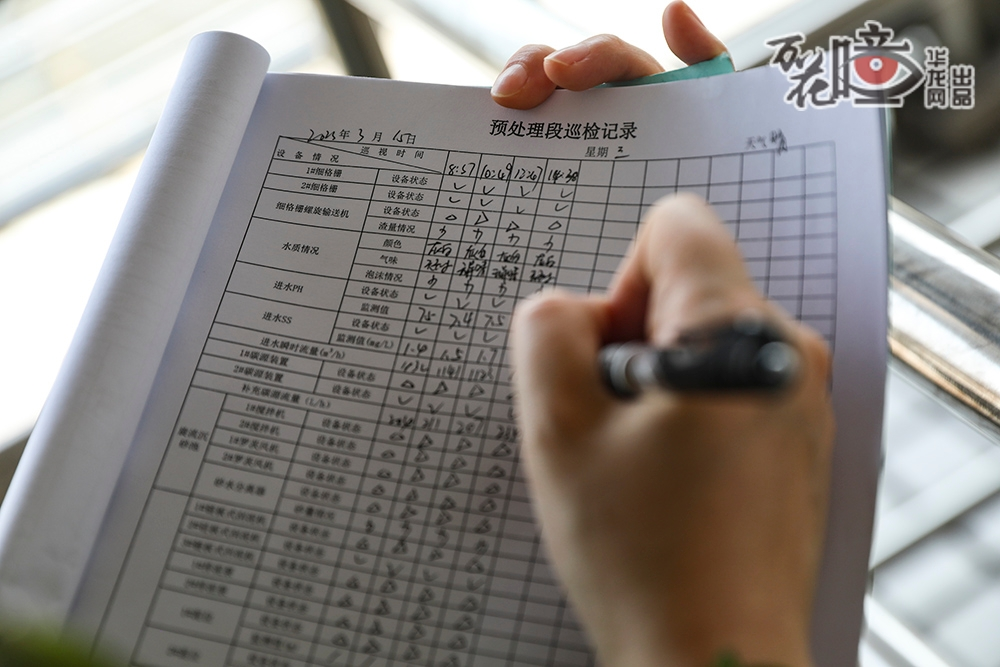
Zhou Xin and her colleagues conduct a patrol inspection every 2 hours from the water inlet to check and record the equipment operation values of each process section. In addition, they need to judge whether the odor and color of sewage are abnormal through their eyes and noses.
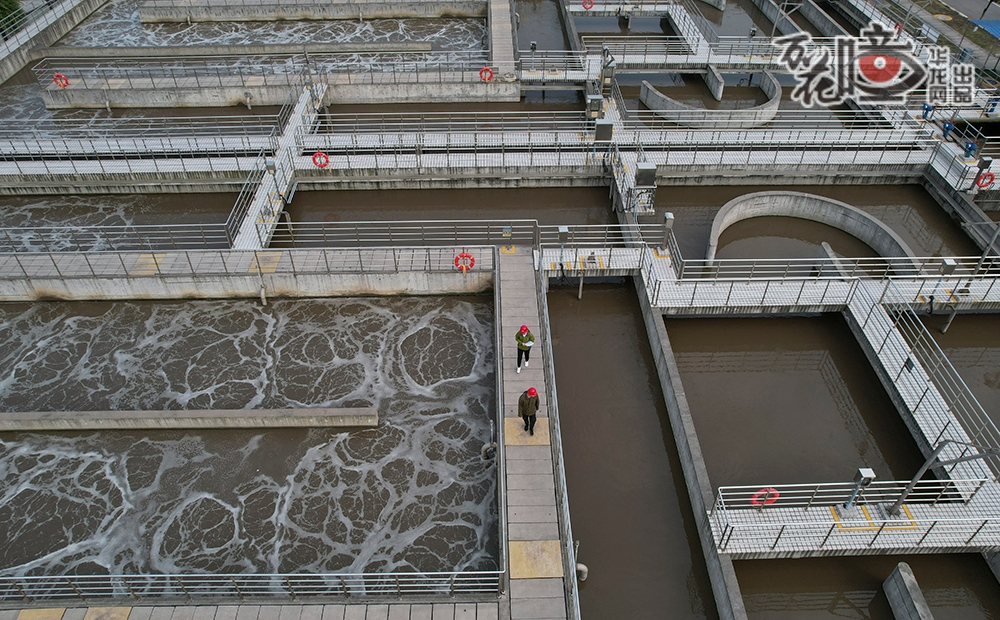
After the primary treatment, the sewage will enter a secondary treatment tank for biochemical treatment. There is a large amount of activated sludge in the tank, where bacteria and microorganisms grow, which are the "main force" for removing pollutants. Air will enter from the bottom of the water with the help of blowers, generating bubbles to provide oxygen for microorganisms and bacteria. Microorganisms, feeding on pollutants, will decompose the pollutants into harmless substances such as water and carbon dioxide.
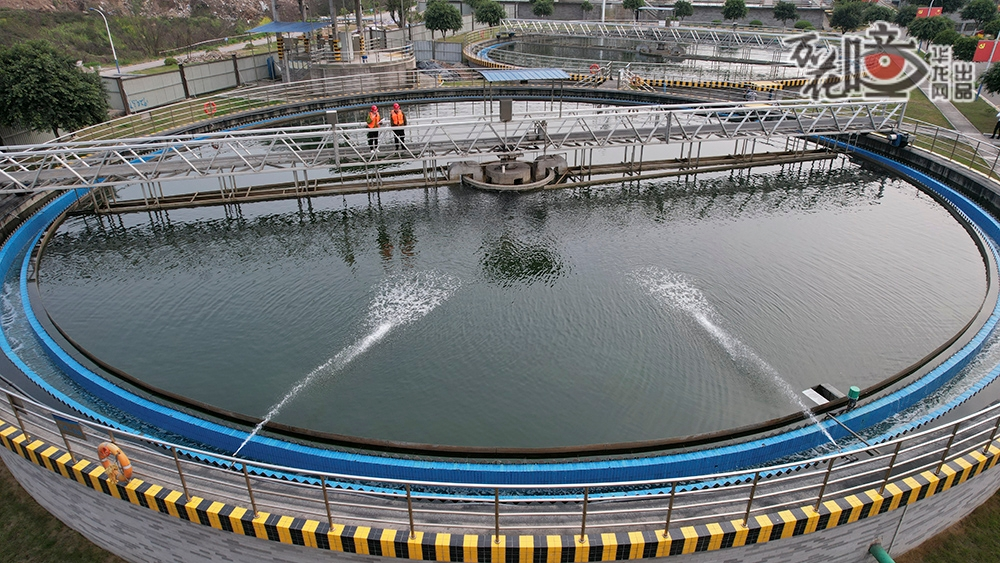
After treated by microorganisms, the sewage will enter the secondary sedimentation tank and will be separated from the sludge. Then some of the sludge will return to the secondary treatment tank for reuse, while the rest will be transported to the places for special treatment and disposal after extra moisture in it is removed.
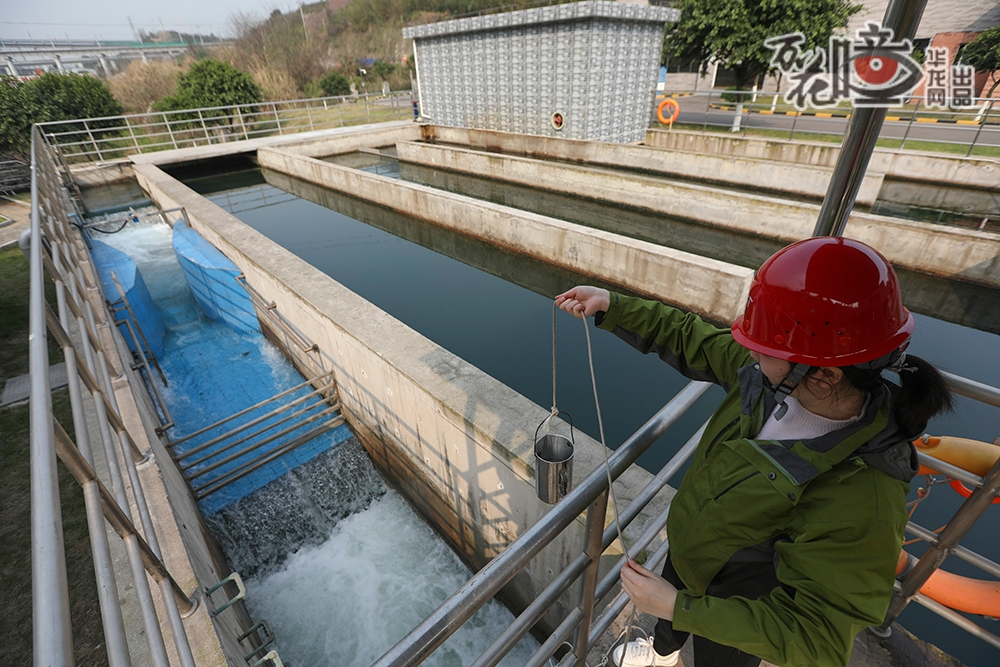
"For the sewage that has undergone secondary treatment, the pollutants are basically removed from it. After advanced treatment such as disinfection, it will meet the discharge standard" Zhou Xin got some sewage from the advanced treatment tank to detect the residual chlorine.
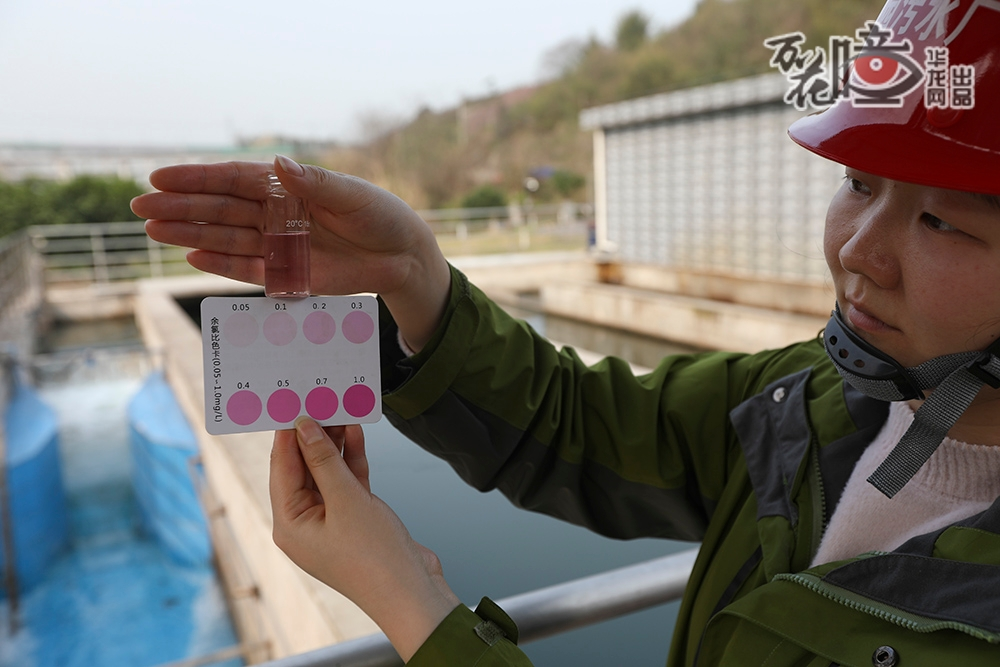
"Look, the water turns pale red after the reagent is added to it, which means that it has met the discharge standard." Zhou Xin explained while showing the test results. Chlorine dioxide is adopted for disinfection during advanced treatment, which is mainly used to kill residual bacteria and microorganisms in the water.
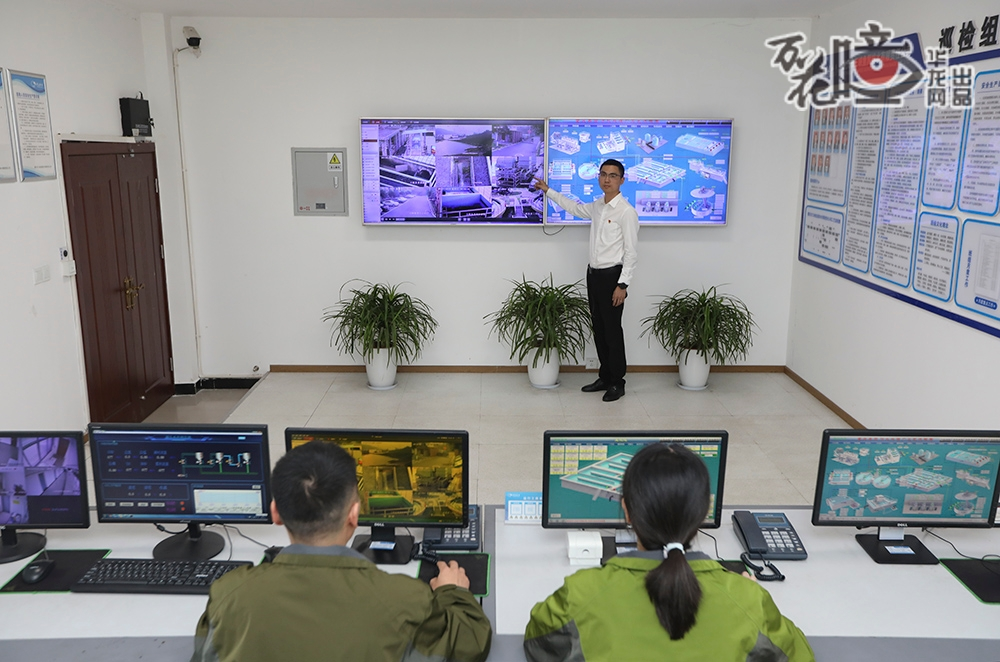
In the central control room of the sewage treatment plant, staff also need to monitor each process section around the clock, involving nearly 20 indicators such as chemical oxygen demand, ammonia nitrogen, total phosphorus, total nitrogen, and sludge concentration.
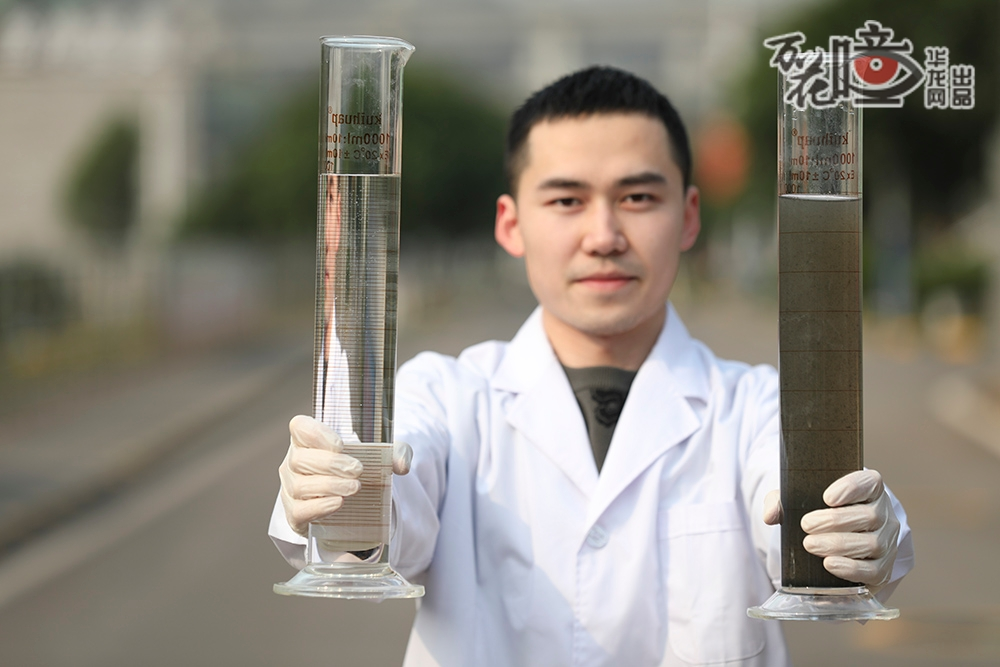
After undergoing a series of "metamorphoses", the sewage will be as clear and clean as tap water. This sewage treatment plant is continuously operating for 24 hours every day. It sticks to its post by the Yangtze River, "fighting side by side" with all sewage treatment plants in Chongqing, and protecting the clear water flowing eastward. (Translated by Hu Chuanmin, Fathom Language Limited)
Editor:Jiang Yiwei
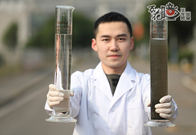
 手机阅读分享话题
手机阅读分享话题